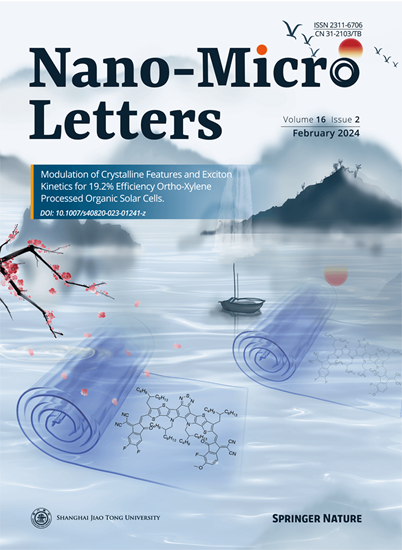MXene-Based Wearable Contact Lenses: Integrating Smart Technology into Vision Care.
IF 36.3
1区 材料科学
Q1 Engineering
引用次数: 0
Abstract
MXene-based smart contact lenses demonstrate a cutting-edge advancement in wearable ophthalmic technology, combining real-time biosensing, therapeutic capabilities, and user comfort in a single platform. These devices take the advantage of the exceptional electrical conductivity, mechanical flexibility, and biocompatibility of two-dimensional MXenes to enable noninvasive, tear-based monitoring of key physiological markers such as intraocular pressure and glucose levels. Recent developments focus on the integration of transparent MXene films into the conventional lens materials, allowing multifunctional performance including photothermal therapy, antimicrobial and anti-inflammation protection, and dehydration resistance. These innovations offer promising strategies for ocular disease management and eye protection. In addition to their multifunctionality, improvements in MXene synthesis and device engineering have enhanced the stability, transparency, and wearability of these lenses. Despite these advances, challenges remain in long-term biostability, scalable production, and integration with wireless communication systems. This review summarizes the current progress, key challenges, and future directions of MXene-based smart contact lenses, highlighting their transformative potential in next-generation digital healthcare and ophthalmic care.基于mxene的可穿戴隐形眼镜:将智能技术融入视力保健。
基于mxene的智能隐形眼镜展示了可穿戴眼科技术的前沿进步,将实时生物传感、治疗能力和用户舒适度结合在一个平台上。这些设备利用了二维MXenes卓越的导电性、机械灵活性和生物相容性,实现了对关键生理指标(如眼压和血糖水平)的无创、基于眼泪的监测。最近的发展重点是将透明的MXene薄膜集成到传统的镜片材料中,从而实现多功能性能,包括光热治疗、抗菌和抗炎症保护以及抗脱水。这些创新为眼科疾病管理和眼睛保护提供了有希望的策略。除了多功能外,MXene合成和设备工程的改进还增强了这些镜片的稳定性、透明度和可穿戴性。尽管取得了这些进步,但在长期生物稳定性、可扩展生产以及与无线通信系统的集成方面仍然存在挑战。本文综述了基于mxene的智能隐形眼镜的发展现状、面临的主要挑战和未来发展方向,强调了其在下一代数字医疗和眼科保健领域的变革潜力。
本文章由计算机程序翻译,如有差异,请以英文原文为准。
求助全文
约1分钟内获得全文
求助全文
来源期刊

Nano-Micro Letters
NANOSCIENCE & NANOTECHNOLOGY-MATERIALS SCIENCE, MULTIDISCIPLINARY
CiteScore
32.60
自引率
4.90%
发文量
981
审稿时长
1.1 months
期刊介绍:
Nano-Micro Letters is a peer-reviewed, international, interdisciplinary, and open-access journal published under the SpringerOpen brand.
Nano-Micro Letters focuses on the science, experiments, engineering, technologies, and applications of nano- or microscale structures and systems in various fields such as physics, chemistry, biology, material science, and pharmacy.It also explores the expanding interfaces between these fields.
Nano-Micro Letters particularly emphasizes the bottom-up approach in the length scale from nano to micro. This approach is crucial for achieving industrial applications in nanotechnology, as it involves the assembly, modification, and control of nanostructures on a microscale.
 求助内容:
求助内容: 应助结果提醒方式:
应助结果提醒方式:


